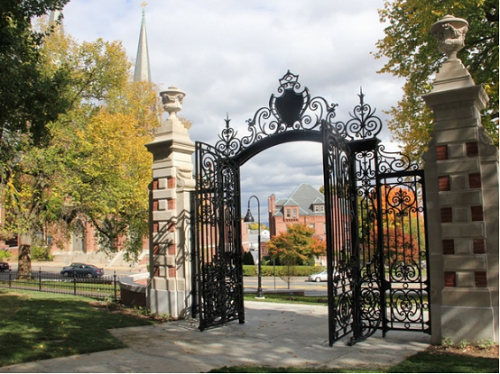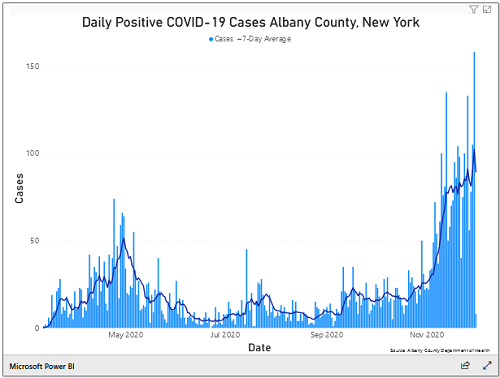Yesterday was Thursday, so between 11 AM and noon I attended the Thursday Morning Group. About ten years ago when Deborah and I were on sabbatical leave in Mexico, I started attending this peer mentoring group. We are a group of system dynamics modelers who meet online to share our work and help each other in our careers. Over time, we had all gotten to know one another face-to-face at UAlbany. We continued to meet several times a year at professional meetings. I think of this group as local response to a more globally-conceived problem. The “global problem” was that our careers, love lives, and other family pressures pulled us to work all over the world. Our “local action” was to form this online group. In this case, “thinking globally while acting locally” seems to have worked for us.
It can be hard to think globally. Ali’s model depicts a global view of the COVID-19 pandemic that is too complex for me to hold in my brain. So when I work with his model, I reduce it to some simple-to-grasp heuristics or themes that can “fit” within my mental model. My personal mental model sees six themes within Ali’s formal simulation:
(1) The COVID-19 pandemic is an exponential explosion. The pandemic burst upon the world with a strong reinforcing feedback loop where a small stock of sick persons infected a much larger stock of susceptible persons thereby creating a major flow of persons becoming sick who, in turn, reinforce the explosive growth. In some places, a doubling of sick persons seemed to take place in as little as three to five days.
(2) Only mass immunity can securely stop this explosive growth. There are two ways to achieve immunity as an enduring “solution” to the pandemic. First, let the pandemic rip through the population until almost all of us have experienced it. This is unacceptable. Second, we can develop a vaccine and immunize our populations. This is still a long way off (See How to Stop a Pandemic).
(3) Social distancing and lock downs are immediate stop gap measures. Social distancing works to drive down the probability of transmission that arises every time an infected person encounters a susceptible one, and lock downs severely limit the number of daily contacts between infected and susceptible persons. These are necessary first actions, but are very expensive because they also shut down the economy (See How to Stop a Pandemic).
(4) Distancing and lock downs buy us time. These first policies spread out the peak of the first wave and lower it, thus helping to prevent hospitals from being overwhelmed. They also buy time for new treatments to be tried out, for work on vaccines to proceed, for diagnostic and immune status tests to be developed and disseminated, and most importantly for government-sponsored public health strategies based on the availability of abundant testing to be designed and implemented.
(5) Test-based regimes will supplement distancing and lock downs as the economy slowly reopens. Ali’s model supports the effectiveness of global testing policies. Standard public health regimes focus on Test-Trace-Quarantine protocols. These test-based regimes exist in many forms, some of which would be appropriate for our society after the intensity of the first wave is over. We need to be smart enough to implement them promptly after the first wave has passed (See Uncle Ted’s Plan for Protecting His Company).
(6) A Second Wave may be just around the corner. If we let up on social distancing and drastically reduced social contacts without putting in place well-designed test-based regimes with strong social discipline, the COVID-19 pandemic is poised to bounce back with a second wave (See Will There Be a Second Wave?).
For me, these six themes sum up much of the global picture of the pandemic coming from Ali’s model. But this global thinking does not fully answer my brother Ted’s need for local action that moves beyond standard public health measures in order to further protect the health of two of his 38 workers. He needs to devise local actions that will work for his own firm (Uncle Ted’s Plan for Protecting His Company). Similarly, global thinking does not help our local church board decide what to do about the weekly Sunday worship service, which is a place where our most vulnerable seniors gather in large numbers. The board must act locally to design new forms of collective worship that meet our needs to gather as a group, while at the same time keeping our most vulnerable members safe (Reopening Our Church for Normal Worship Services).
Yesterday, I listened as members of my Thursday Morning Group talked about how their own universities were weighing how to reopen next fall. All of them were considering the kind of local actions that emerge from smart thinking about the global nature of this pandemic—avoid large in-person lecture classes with hundreds of students (move them online?), promote smaller and safer in-person experiences (such as lab classes) and find new balances between full and part time student academic and residential experiences.
We all need to think globally about this pandemic while at the same time drilling down to specific details to invent locally smart actions.





